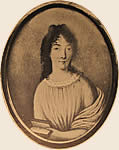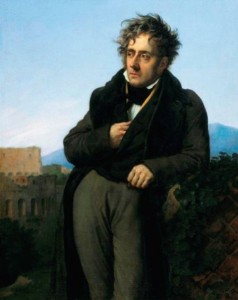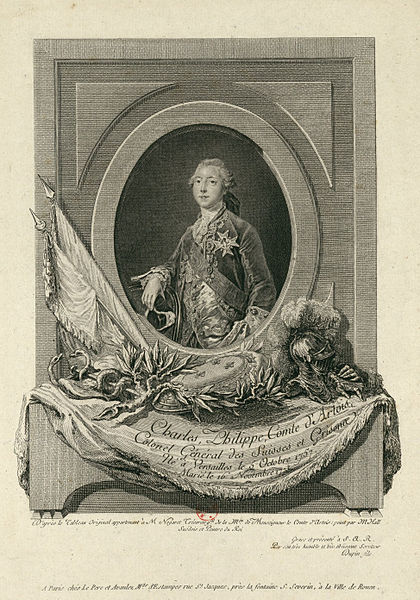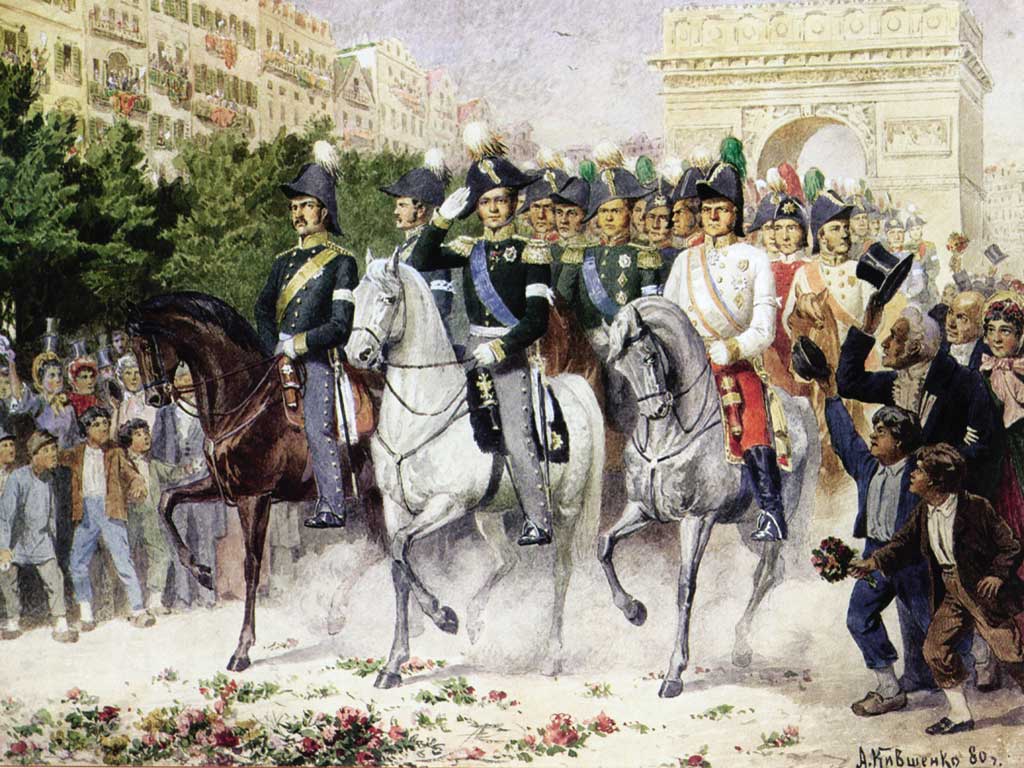The Countess de Marigny, sister of François-René de Chateaubriand, was in Paris in 1814, when the Allies entered the city. She took notes, day by day, in thin notebooks, of the news and noise bruited about the capital. When one notebook was filled she sent it to her relatives in Brittany. These notebooks have just been published by J. Ladreit de Lacharrière. This is her account of the entrance of the Count of Artois [the future Charles X] in Paris:
“Tuesday, April 12—I woke up quite ill, but determined to do the impossible to see the Prince so dear to the French. I drank some coffee to revive myself and then, as the mentor of the Verpier girls, whose mother was exceedingly indisposed, I set out with the hope of gaining admission to Notre-Dame, which I tried uselessly, even with money, which I offered to a poor man who was guarding a small door through which the canons entered. Not knowing where to go, feeling myself unable to remain standing in the street for five or six hours, I returned with my companions, very sadly. Passing in front of a wine merchant, I asked him if he had a window overlooking the street and if he would rent it. He wanted nothing better. The day’s market was over already.
“The crowd of people and vehicles headed to Notre-Dame was so immense that one could not look at it for a long period of time. Several times I was obliged to withdraw from the window. I was dazzled. I saw Madame de Gois among the ladies who could not find a place. I called her. She came with all who were with her and occupied a window that had not yet been rented out, and which she paid for. One could see in the carriages most beautiful toilettes, and even among the women who were on foot, some were very well arranged. Almost all of them had fleurs-de-lys on their hats, or in bouquets before them. Some of them had three fleurs-de-lys embroidered in gold on their puffed-up sleeves.
“The white flag, with the arms of France, fluttered over the towers of Notre-Dame. Finally, at noon, the big bourdon rang and one knew then that Monsieur was at the gate of the faubourg Saint-Denis. A numerous detachment of the National Guard awaited him there. The soldiers threw their weapons at his feet, in a wave of respect and love. Monsieur seemed moved. His Highness embraced some whom he recognized…
“Amidst this throng of white panaches and lords of his entourage, the Count of Artois set out for Notre-Dame, but the quantity of people who pressed him in his passage, the churches where he was offered incense blocked and slowed his path so much, that it was half past two in the afternoon when he entered the street that lead to the cathedral, and where I was waiting.
“When he passed through the triumphal arch of the door of Saint-Denis, the big bourdon had peeled again, but as he approached Notre-Dame all of the bells began to ring. They could not drown out the acclamations and the music which blended in. No; never can one be so intoxicated. One may say that the joy was overflowing. People wept. Others uttered cries wishing him happiness. Seeing him passing, one feared not having sufficient strength to survive, and I was among this group. Madame de Gois scolded me strongly for my sensitivity. She did me good. I stiffened myself against the uneasiness I had felt. I had hurled myself almost completely out the window, rejoicing at giving him my last sigh. I had let escape from my heart, my wishes for his happiness, my pity recalling his many misfortunes, or perhaps all of these sentiments, for I was besides myself…
“The sanctity of the place could not stop the transports of joy of those inside the church. The vaulted ceilings were shaken by the acclamations. This religious Prince, however, as soon as the first chords of Te Deum rang out, turned and gestured for silence. At the Domine salvum fac regem heavy tears streamed from his eyes.
“At last the return cortege began, and to our great joy, brought His Highness again under our windows, where with half of the body once more hanging out of the window, we cried out with a last effort: “Vive Monsieur! May Heaven permit that you be happy forever!” Our fleurs-de-lys-covered hats, our action, our waving handkerchiefs caught for a moment the gaze of this Prince, who greeted us with that grace and amiable smile that no one but him possesses.
“Then, at the height of happiness, not knowing any longer what I was doing, it seemed to me that I should look at no one else and that any other object was no longer worthy of notice. I sat down to breathe. I was choking. My voice failed me. I could not respond except through signs.
“It was necessary to think about returning to the convent. I had suggested to the company to go to Notre-Dame to give thanksgiving to God for having preserved unto us the family of Saint Louis… I reentered my home exhausted from heat and fatigue, but above all so overwhelmed with joy that I could not sleep.”
Msgr. Henri Delassus, L’Esprit Familial dans la famille, la cité, et dans l’état (Cadillac, France: Éditions Saint-Remi, 2007), pp. 38-40 fn. 1. (Nobility.org translation.)
Short Stories on Honor, Chivalry, and the World of Nobility—no. 175
Learn more about true solutions for today’s leadership crisis by subscribing to the NOBILITY NEWSLETTER.
Click here to sign up for a FREE subscription now!










